Seed round financing of 22 million USD, what is the background of the cross-chain interoperability protocol Nomad? How does it work?
Author: Karen, ForesightNews
On April 13, the cross-chain interoperability protocol Nomad completed a seed round financing of up to $22 million at a valuation of $225 million, led by Polychain. For a startup, securing tens of millions in seed funding is a significant advantage at the starting line. What unique strengths does Nomad have in terms of team, design mechanisms, and more? How is it related to the cross-chain communication protocol Optics?
Nomad Team Background and Supporters
According to official information from Nomad, its founding team members have been involved in interoperability research for over four years. In 2017, several of them worked at the cross-chain interoperability R&D company Summa. Summa is a contributor to the Bitcoin, Ethereum, Cosmos, and Zcash ecosystems, and its research on atomic swaps, SPV (Simple Payment Verification) proofs, and zero-knowledge-based cross-chain communication laid the foundation for many current interoperability technologies. It also provided technical support for Keep Network's tBTC and NEAR's Aurora EVM.
Summa has also received investment support from Polychain Capital, INBlockchain, and Naval Ravikant, among others. In August 2020, one of the key reasons Celo's ecosystem development organization cLabs acquired Summa was to build an efficient cross-chain communication interoperability mechanism called Optics.
Nomad's CEO and co-founder Pranay Mohan has eight years of development experience. He worked as a software engineer at IBM in 2014 and later co-founded the software media company SE Daily. He has also held positions at Snapchat, O(1) Labs, and Celo, and is an advisor to Hashflow.
The other two co-founders, Barbara Liau and James Prestwich, are also co-founders of Summa. James Prestwich was a co-founder and former COO of Storj, while Barbara Liau was a former developer at Storj and currently serves as COO at Nomad. Additionally, the Nomad team includes engineer Conner Swann, who serves as Bridgemaster, and protocol lead Anna Carroll.
In Nomad's $22 million seed round financing, in addition to the lead investor Polychain, there are dozens of participating investors, including 1kx, Ethereal Ventures, Hack VC, Circle Ventures, Amber Group, Archetype Ventures, Lattice Capital, A&T Capital, Hypersphere, Dialectic, Breyer Capital, Figment, LedgerPrime, Robot Ventures, Continue Capital, Wave Financial, and Open Web Collective.
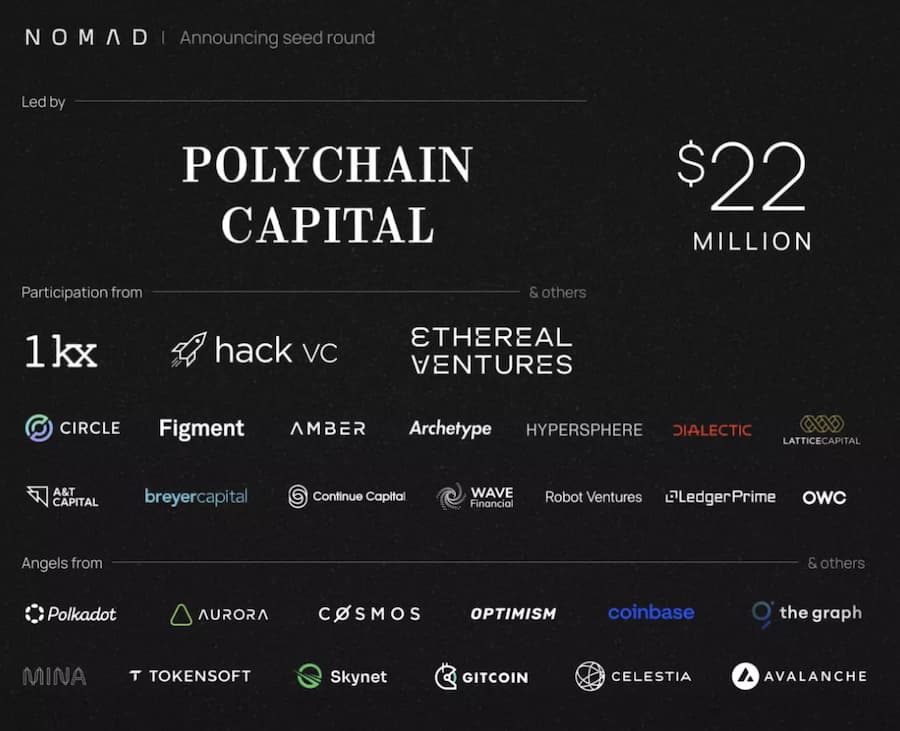
Nomad's early partners also include Connext, Moonbeam / PureStake, Milkomeda C1 / dcSpark, Evmos / Tharsis, Neon / Neon Labs, and others.
Nomad: An Extension of the Optics Protocol
After comparing the documentation of Nomad and Celo's cross-chain communication interoperability mechanism Optics, it was found that the documentation for Nomad and Optics is highly similar. Considering that several members of the Nomad team previously held key positions at Celo or at Summa, which was acquired by Celo's ecosystem development organization cLabs, it can be inferred that the core concepts and infrastructure of the two are quite similar.
In this regard, Nomad's development lead Julian Rachman responded to Foresight News, stating that Nomad is an extension of the Optics protocol but does not use the Optics infrastructure and is completely independent of Optics' optimistic security mechanism.
What is Nomad?
Nomad recognizes that while header relays or light clients are theoretically considered the safest way to build cross-chain bridges, they are not scalable and are difficult to deploy across heterogeneous ecosystems. Light clients require expertise in implementing proof of work and proof of stake, making them unfriendly to new developers.
In light of this, Nomad draws inspiration from Optimistic Rollups and is currently exploring a method that avoids light clients by utilizing fraud proofs to build a trust-minimized bridge within Optimistic Rollups, making it easier to deploy across various ecosystems. As a result, compared to traditional header relays, Nomad expects to reduce gas costs by 90%. This is also part of Optics' design.
Nomad aims to provide a security-first interoperability solution. With Nomad, developers can securely build cross-chain applications (xApps) and bridge assets between chains. Currently, Nomad has launched the Nomad token bridge, supporting cross-chain asset transfers on Ethereum, Moonbeam, and Milkomeda C1, with plans to support more chains in the future.
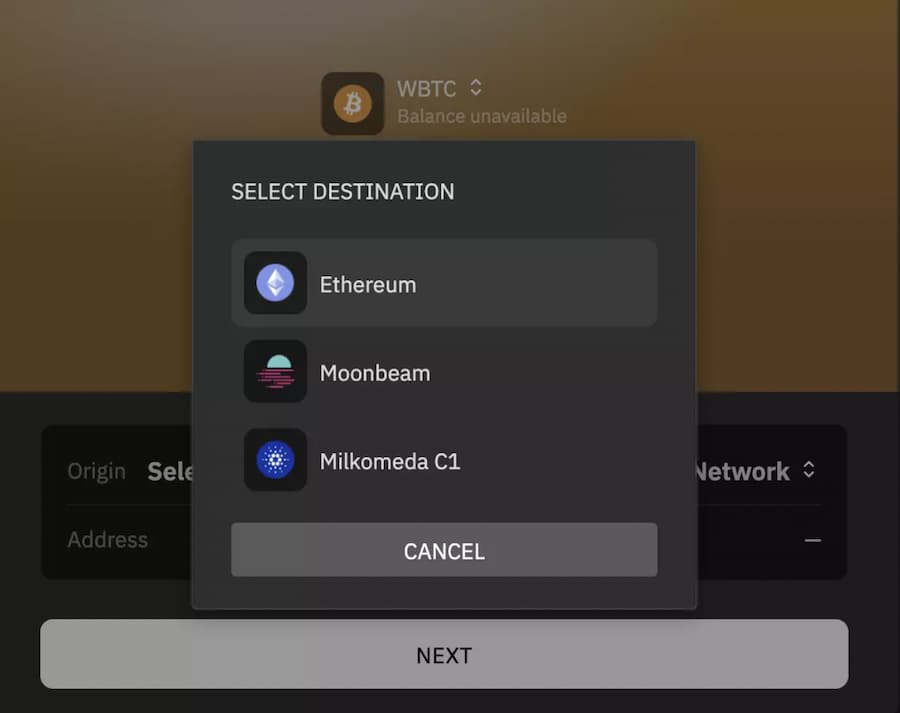
Nomad's Operating Model
Nomad's underlying operating model is roughly similar to that of Optics, mimicking optimistic systems and using fraud proofs to relay data across chains, allowing for cross-chain communication between multiple chains. After observing some data proofs, the data proofs will be validated before a timer expires. During the timer's operation, honest participants have the opportunity to respond to the proofs or submit fraud proofs.
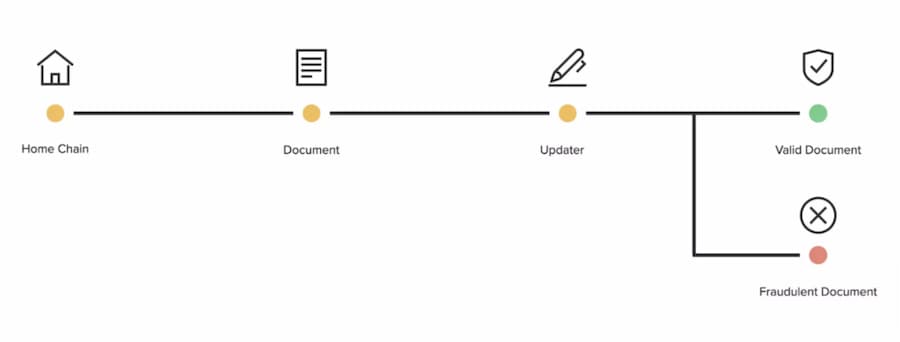
Nomad has two on-chain roles: Home and replica contracts, as well as multiple off-chain roles such as updaters, watchers, and relayers.
Home contract on the source chain: Responsible for managing the message tree and the collateral bound to updaters;
Replica contract: Any chain can maintain a replica contract, managing optimistic replication and dispatching messages to the final recipient address when the fraud proof window ends;
Updater: Signs new root proofs and publishes them to the source chain;
Watcher: Observes the interaction between the updater and the Home contract, responds to malicious proofs, and ensures that the updater does not bypass the Home and directly enter the replica.
Relayer: Forwards updates from home to one or more replicas.
Processor: Validates the proofs of pending messages, submits Merkle proofs, and sends them to the final recipient.
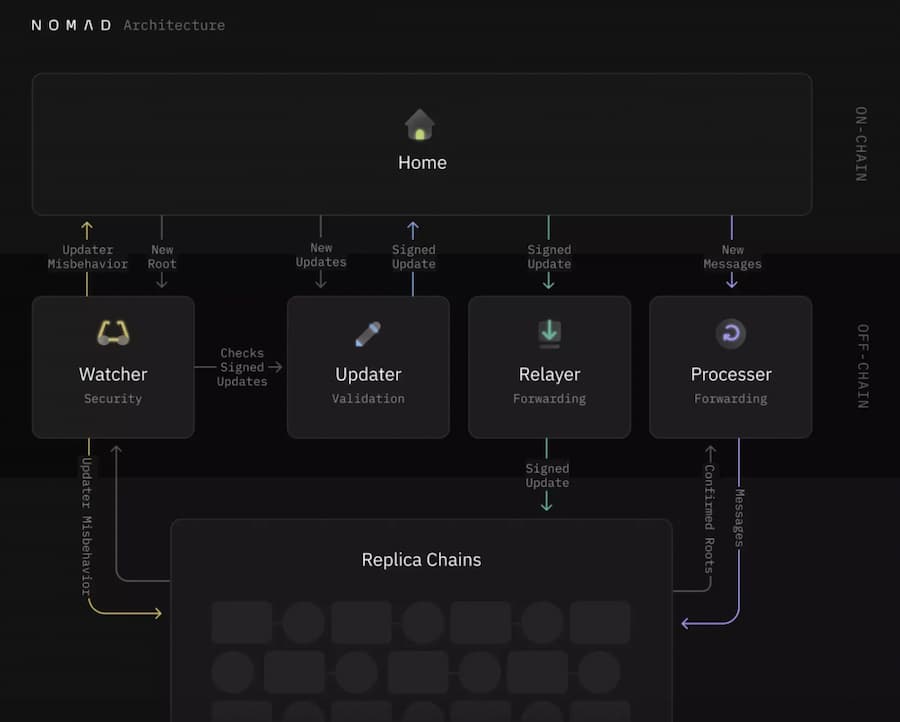
From the operations performed by the various roles, we can roughly see the cross-chain messaging process of Nomad, which is as follows:
- A DApp or user publishes data to the contract on the source chain.
- The source chain designates an updater that can prove its message tree (Merkle tree), and the updater binds collateral on the source chain and regularly signs proofs.
- The relayer begins to submit updates with the Merkle root from Home to one or more replicas, which, upon acceptance, place these updates in a pending state.
- During the 30-minute fraud proof window, watchers play a role, responding to malicious proofs and ensuring that the updater does not bypass the Home and directly enter the replica.
- At the end of the 30-minute window, if a fraud proof is found, the collateral bound to the updater will be forfeited and given to the watcher; if no fraud proof is found, the processor generates and submits a Merkle proof for the pending messages, and then the information is sent to the final recipient.
Nomad Services and Short-term Plans
Currently, for users transferring assets across chains, the Nomad token bridge supports cross-chain transfers of assets such as WETH, ETH, USDT, USDC, DAI, GLMR, WGLMR, WBTC, FRAX, and FXS across EVM chains. Additionally, Nomad has directly integrated Connext on its token bridge page, allowing users to use liquidity from Connext for asset transfers across chains. Connext will also integrate Nomad into its xPollinate interface.
After testing, Nomad currently does not charge any cross-chain fees, and transferring ETH from Ethereum to Moonbeam takes about 40 minutes, typically ranging from 35 to 60 minutes. Using Connext for cross-chain asset transfers takes 7 to 10 minutes, but incurs a small additional cross-chain fee.
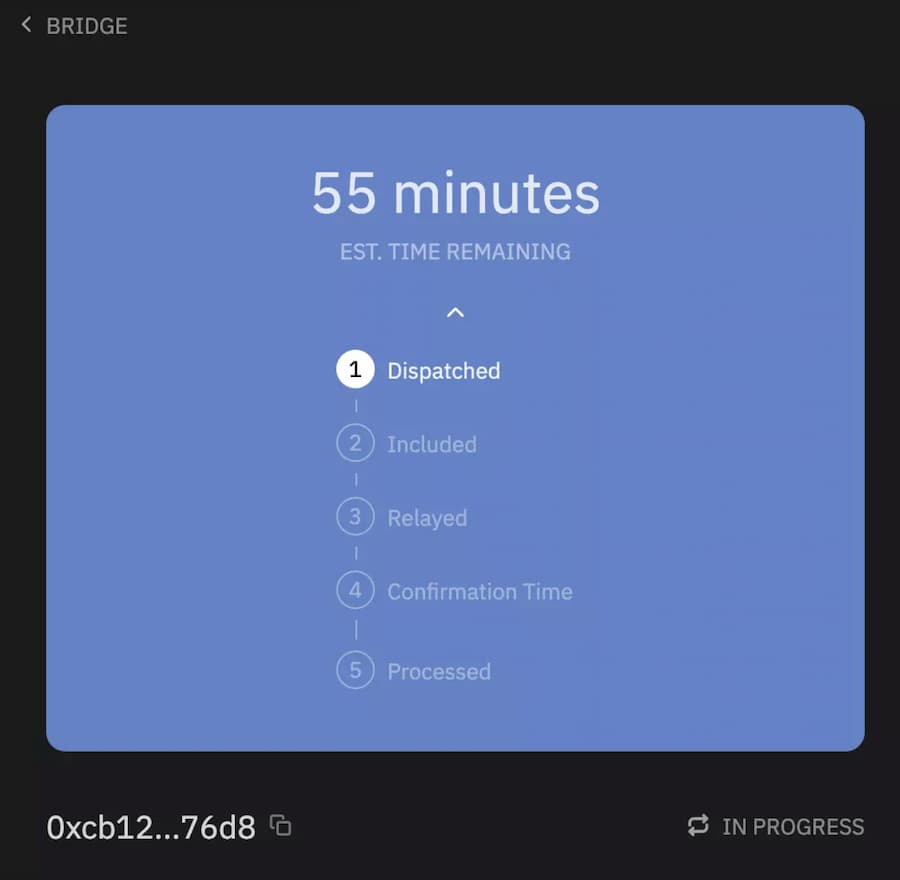
For developers, Nomad's universal messaging channel will enable them to transmit arbitrary messages between chains, and even call smart contract functions across chains to build cross-chain applications.
In the next 3 to 6 months, Nomad plans to support more chains, expand its team, and gradually decentralize its system. However, Nomad has stated in its official documentation that it has not issued a token, and it is unclear whether there are plans for a token issuance in the short term. In a recent AMA organized by StellaSwap and Nomad, Nomad indicated that it would deploy to Evmos next and later support networks such as Gnosis Chain, Polygon, Avalanche, Fantom, BNB Chain, Optimism, and Arbitrum.
In summary, Nomad provides a cross-chain solution that balances speed, cost, and network security by utilizing fraud proofs in a manner similar to optimistic systems. With complementary collaborations with cross-chain infrastructures like Connext and future integrations with other DEX protocols, it may play a key role in interoperability solutions.
Reference Links:
https://docs.nomad.xyz/#nomad-architecture
https://github.com/nomad-xyz/nomad-monorepo
https://blog.connext.network/connext-has-partnered-with-nomad-e20cd8e62e31
https://blog.connext.network/optimistic-bridges-fb800dc7b0e0










